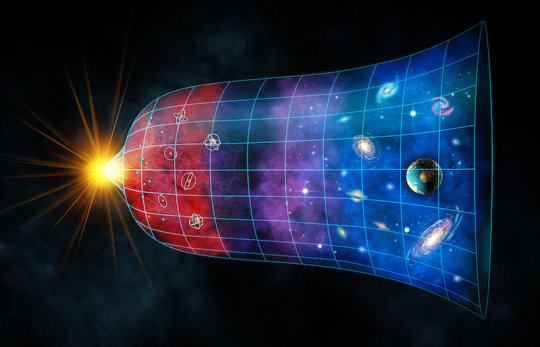
There could have been two scenarios with the two Big Bangs. The Hot Big Bang, as in the standard picture, creates the hot plasma of visible matter and radiation and the dark matter, however, could have been created in a later, ‘darker’ Big Bang.

One of the most common sources of magnetic fields on large scales comes from the collisions between and within interstellar plasma. This is one of the major sources of magnetic fields for galactic-scale magnetic fields.

According to a new U.S. research it appears that the Universe is actually getting hotter as time goes on. The mean temperature of cosmic gas has increased more than 10 times and reached about 2.2 million K.

A team of U.S. astronomers have created the Pan-STARRS1 Source Types and Redshifts with Machine Learning (PS1-STRM), the world’s largest three-dimensional astronomical catalog.

U.S. scientists have precisely measured the total amount of matter making up the cosmos, concluding that dark energy accounts for 69 % of the total mass-energy budget with normal and dark matter being 31.5 %.

Recently scientists suggested that have suggested the universe may be hundreds of millions of years younger. However a new observations suggest the universe is still about 13.8 billion years old.

Hundreds of scientists from about 30 institutions worldwide have published the largest-ever 3D map of the Universe, the result of an analysis of more than 4 million galaxies and ultra-bright, energy-packed quasars.

The universe is full of billions of galaxies. Why do we see so much structure in the universe today? A 10-year survey of tens of thousands of galaxies has provided a new approach to answering this fundamental mystery.

One of the core assumptions of astronomy is that the universe appears the same in all directions, or it is isotropic. However, a recent study suggests that may not be the case.

Years of observational data, cosmological models and physics suggest the Universe is flat. However, a recent study suggests that the Universe is actually curved and closed, like an inflating sphere.

Astronomers have made a new measurement of how fast the universe is expanding, using an entirely different kind of star than previous endeavors. The revised measurement may lead to a new interpretation of the universe's fundamental properties.

It has taken researchers almost three years to produce this deepest image of the Universe ever taken from space, by recovering a large quantity of ‘lost’ light around the largest galaxies in the iconic Hubble Ultra-Deep Field.

Swedish researchers have devised a new model for the Universe, that may solve the enigma of dark energy. They proposes a new structural concept of a universe that rides on an expanding bubble in an additional dimension.

A relic cloud of gas, orphaned after the Big Bang, has been discovered in the distant universe by astronomers using the world's most powerful optical telescope, the W. M. Keck Observatory on Maunakea, Hawaii.

UK researcher, Jamie Farnes, suggests both dark energy and matter can be unified into a single substance — a negative-mass ‘dark fluid.’ The theory may also prove right a prediction that Albert Einstein made 100 years ago.